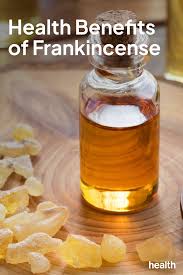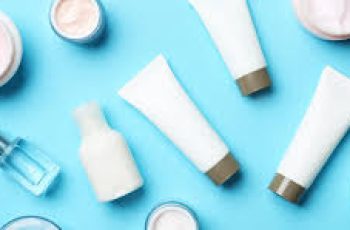
Uses and Benefits of Frankincense
Frankincense is a resin or essential oil (concentrated plant extraction) with a rich history as an incense, perfume, and medicine. Derived from Boswellia trees, it still plays a role in the Roman Catholic and Eastern Orthodox churches and is used by people for aromatherapy, skin care, pain relief, and more.12
In traditional Indian medicine, frankincense is used to treat gastrointestinal tract conditions such as diarrhea and vomiting. It also is used to treat arthritis, asthma, and various skin diseases. In Western medicine, the research on frankincense uses and benefits is still relatively limited.2
Originating in Yemen, Oman, India, and Pakistan, frankincense is collected primarily from tree farms in East Africa and parts of the Arabian Peninsula. In some areas, Boswellia is a threatened species due to bug infestations, cattle grazing, fires, and diminishing habitats. For this reason, the cost of frankincense can be high at times.
Uses and Benefits
There is widespread interest in using frankincense to treat various health conditions, and initial studies are promising. However, conclusive research is not yet available. More studies are needed, particularly in humans, before experts can recommend frankincense to manage or treat particular health conditions.
Some initial findings regarding the potential benefits of using frankincense include:43
May improve osteoarthritis (OA) symptoms: Some research has found that frankincense was more effective than a placebo at improving flexibility and reducing knee pain in people with osteoarthritis.
May reduce pain in people with rheumatoid arthritis (RA): One study found that applying a cream that contained frankincense and several other ingredients helped to reduce joint pain and swelling. However, because frankincense was studied in combination with other ingredients, its true benefit on rheumatoid arthritis is unknown.
May ease low back pain: One small study found that using frankincense essential oil and myrrh during a massage resulted in less back pain for study participants when compared to a placebo.
May combat skin aging: Researchers have found that applying creams containing Boswellic acids from Boswellia serrata can improve skin texture and reduce the appearance of fine lines.
May reduce symptoms from radiation treatment: Research suggests that people undergoing radiation for breast cancer can reduce erythema (a type of rash) by applying a cream containing frankincense twice a day during treatment. However, the research from this study was funded by the cream’s manufacturer and may be biased.
What To Know about Boswellic Acids
Boswellic acids, which many believe to be the healing component of frankincense, are not present in essential oils. You can only find them in frankincense resins, which are thick, semi-solid compounds, as well as in specifically made extracts.5
How To Use
Essential oils like frankincense are highly concentrated, so you only need a small amount for most uses. You can use frankincense in a diffuser, add it to a bath, or blend it with other ingredients to make a skincare cream.
Follow the manufacturer’s instructions on how much to use, but generally, just a few drops of frankincense added to water in a diffuser will give your area an earthy fragrance. Diffused frankincense is thought to enhance mood, strengthen intuition, or promote mindfulness. You can also mix it with water to create a room spray for the same effect.6
To use frankincense topically, dilute a few drops with a carrier oil like olive oil, jojoba, or coconut oil before applying it to your skin. Some people add other ingredients or oils to create facial serums. You can also add a drop or two to your shampoo to support scalp health or add a few drops to a warm bath to promote relaxation. Make sure to test-patch any products with frankincense before applying it all over your skin.6
Some people use frankincense to create homemade cleaners due to its antibacterial properties.6
Safety and Side Effects
Frankincense is generally considered safe to use topically or as aromatherapy and does not have significant side effects. However, it could cause skin irritation.3
While skin irritation, rashes, and itching are rare with frankincense, there are a few reports of dermatitis and other rashes. For instance, in one case, a person diffused frankincense and used it on her pillow and developed dermatitis as a result. In another case, a person developed a rash after using a cream that had frankincense.3
If you intend to use frankincense, you may want to test it on a small patch of skin first. For 7-10 days, apply a small drop or two mixed with a carrier oil to the same spot twice a day. (Consult the manufacturer’s instructions to determine how much to use). Also, try to pick an area where you won’t wash away the product, such as the bend of your elbow.7
If you don’t have any type of reaction after that test period, it’s likely safe to use—though it’s always a good idea to talk with a healthcare provider first. If you have a reaction to frankincense, gently wash the area and don’t use it again on your skin. To help relieve the discomfort, you can apply a cool compress or petroleum jelly. If this does not relieve your symptoms or your reaction worsens, see a medical professional like a dermatologist.7
When ingested, frankincense has the potential to interfere with some prescription drugs, such as immunosuppressants and statins.8 Experts also advise against using it while undergoing chemotherapy because of potential medication interactions. If you plan to use frankincense and currently take medications or have a chronic health condition, talk to a healthcare provider first.5
Choosing Frankincense
When looking for frankincense, it’s important to remember that no regulatory agencies govern the production of essential oils. Despite companies using terms like “therapeutic grade” or “pure,” no governing bodies certify the use of these terms, and they are not indicative of a product’s quality.9
The U.S. Food and Drug Administration (FDA) does not regulate essential oils in the same way it regulates prescription medications. However, the FDA may remove a product from the market if the manufacturer’s claims are false or the product is deemed unsafe.10
Even though some research suggests that essential oils like frankincense can help with inflammation or relieve pain, more research is needed before manufacturers can make these claims. Consequently, when companies attempt to sell essential oils as medications or claim that they cure particular symptoms, the FDA and the Federal Trade Commission can take action.10
Here are some tips for finding a quality frankincense product:9
Look at the ingredient list to ensure the essential oil contains only frankincense and no other ingredients. Ideally, the manufacturer will list only frankincense and its Latin name (Boswellia) on the label.
The oil should come in an amber-colored bottle that helps it maintain its integrity.
Always look to see if the manufacturer includes the oil’s origin and extraction method.
Smelling the oil before buying it can help ensure you don’t purchase a rancid product.
You may need to try a few products to find an oil that you like and feel is effective. An aromatherapist or naturopathic doctor may also be able to offer suggestions. If you plan to use frankincense to complement traditional medicine, talk to a healthcare provider about it, especially since it could potentially interact with existing medications.
A Quick Review
Frankincense is derived from Boswellia trees and is primarily used as an essential oil, but it can also be used in resin form. It has been used for religious ceremonies, as a perfume, and to help with medical conditions. Some research suggests it can improve arthritis symptoms, ease low back pain, and combat skin aging.
While researchers are interested in frankincense for its potential antibacterial and anti-inflammatory properties, most current studies have been conducted in vitro or on animals. For this reason, experts generally do not recommend frankincense as a way to treat medical conditions. If you want to use frankincense, it’s best to talk with a healthcare provider first. They can help you determine if it’s right for you.


